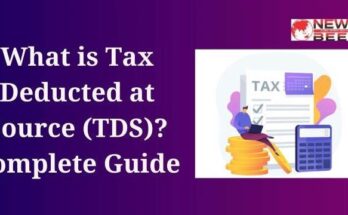Investing in gold has long been a popular way to preserve and grow wealth. Gold offers a hedge against inflation, economic uncertainty, and currency fluctuations. There are various ways to invest in gold, including buying physical gold in the form of coins or bars, investing in gold ETFs (Exchange-Traded Funds), or purchasing shares in gold mining companies. Each approach has its own advantages and risks, making it essential for investors to research and carefully consider their investment goals and risk tolerance before choosing the method that best suits their needs. Whether you’re seeking stability in your portfolio or diversifying your investments, gold can be a valuable addition to your overall financial strategy.
How to Invest in Gold
Investing in gold can be an excellent way to diversify your investment portfolio and protect your wealth. Gold has been a store of value for centuries and is often seen as a safe-haven asset during times of economic uncertainty. In this comprehensive guide, we will walk you through the basics of investing in gold for beginners.
Section 1: Why Invest in Gold
1.1 Historical Perspective
Gold has been a valuable commodity for thousands of years. It has been used as currency, jewelry, and for various industrial purposes. Its enduring value makes it an attractive investment.
1.2 Portfolio Diversification
Gold is considered a hedge against economic instability. When stock markets decline, gold often retains or even increases in value, providing diversification to your investment portfolio.
1.3 Inflation Hedge
Gold has historically acted as a hedge against inflation. When the purchasing power of fiat currencies decreases due to inflation, the value of gold tends to rise.
1.4 Geopolitical Uncertainty
During times of geopolitical instability or crises, investors often flock to gold as a safe haven. It is not tied to any particular government or economy.
Section 2: Types of Gold Investments
2.1 Physical Gold
Physical gold is tangible, precious metal used for investment and adornment, valued for its rarity, durability, and timeless allure.
2.1.1 Gold Coins
Investors can buy physical gold coins issued by government mints or private companies. Popular options include American Eagles, Canadian Maple Leafs, and South African Krugerrands.
2.1.2 Gold Bars
Gold bars come in various sizes, from small bars suitable for individual investors to larger ones used by institutions and central banks. They are often more cost-effective than coins.
2.1.3 Jewelry
While primarily used for adornment, gold jewelry can also serve as an investment. Keep in mind that the value of jewelry may include a premium for craftsmanship.
Also, Read This: What is Digital Marketing in Hindi
2.2 Gold ETFs (Exchange-Traded Funds)
Gold ETFs are investment funds that hold physical gold as their underlying asset. They can be bought and sold on stock exchanges, providing a convenient way to invest in gold without holding physical gold.
2.3 Gold Futures and Options
Experienced investors can trade gold futures and options contracts on commodities exchanges. These derivatives allow you to speculate on the future price of gold without owning the physical metal.
2.4 Gold Mining Stocks
Investing in gold mining companies allows you to gain exposure to the gold market’s potential upside. However, these stocks are influenced by factors beyond just the price of gold.
Section 3: How to Start Investing in Gold
3.1 Set Investment Goals
Determine why you want to invest in gold. Are you looking for a safe-haven asset, portfolio diversification, or long-term wealth preservation?
3.2 Determine Your Budget
Decide how much you can comfortably invest in gold. Remember that it’s just one component of your overall investment strategy.
3.3 Choose Your Investment Method
Decide whether you want to invest in physical gold, gold ETFs, gold mining stocks, or other gold-related assets based on your goals and budget.
3.4 Research and Education
Educate yourself about the gold market, its historical performance, and the specific investment option you choose. Understand the risks and benefits associated with each.
Section 4: Buying Physical Gold
4.1 Finding a Reputable Dealer
If you decide to buy physical gold, research and choose a reputable dealer or mint. Look for dealers with a long track record and good customer reviews.
4.2 Types of Physical Gold
Decide whether you want to buy gold coins, bars, or jewelry. Consider factors like purity, weight, and the premium over the spot price.
4.3 Storage Options
Think about where you’ll store your physical gold. Options include a bank’s safe deposit box, a home safe, or a secure storage facility.
4.4 Purchase and Authentication
When you’re ready to buy, make the purchase through your chosen dealer. Verify the authenticity of the gold through a reputable assay or verification service.
Section 5: Investing in Gold ETFs
5.1 Choose a Gold ETF
Research and select a gold ETF that suits your investment goals and risk tolerance. Look for ETFs with low expense ratios.
5.2 Open a Brokerage Account
If you don’t already have one, open a brokerage account to trade ETFs. Ensure the brokerage offers access to the specific ETF you want to buy.
5.3 Purchase Gold ETF Shares
Place an order to buy shares of your chosen gold ETF through your brokerage account. You can buy and sell these shares like stocks.
5.4 Monitor and Rebalance
Keep an eye on your gold ETF investment, and periodically rebalance your portfolio to maintain your desired asset allocation.
Section 6: Investing in Gold Mining Stocks
6.1 Research Gold Mining Companies
Identify gold mining companies that align with your investment goals. Research their financial health, production potential, and management team.
6.2 Choose a Brokerage Account
Open a brokerage account that allows you to trade stocks on stock exchanges. Ensure the broker provides access to the stock exchanges where your chosen mining companies are listed.
6.3 Buy Mining Stocks
Place orders to buy shares of the gold mining companies you’ve selected. Diversify your investments by considering multiple companies.
6.4 Monitor and Analyze
Regularly monitor the performance of your gold mining stocks. Pay attention to factors like production reports, exploration results, and commodity prices.
Section 7: Storing and Safekeeping
7.1 Physical Gold Storage
If you hold physical gold, ensure it is stored securely in a location that minimizes the risk of theft or damage. Consider insurance for added protection.
7.2 Gold ETFs and Stocks
Gold ETFs and stocks are held in brokerage accounts, eliminating the need for physical storage. However, ensure your brokerage account is secure.
Section 8: Risks and Considerations
8.1 Market Volatility
The price of gold can be highly volatile. Be prepared for price fluctuations and potential losses.
8.2 Economic Factors
Gold’s value can be influenced by economic factors, such as interest rates, inflation, and currency movements. Stay informed about these factors.
8.3 Liquidity
Physical gold may be less liquid than other assets, making it harder to convert to cash quickly in urgent situations.
8.4 Counterparty Risk
When investing in gold ETFs or mining stocks, you’re exposed to counterparty risk, which means you rely on the financial stability of the issuer or company.
Section 9: Selling Your Gold Investments
9.1 Determine Your Exit Strategy
Decide when and under what conditions you plan to sell your gold investments. It could be for profit-taking, rebalancing, or meeting financial goals.
9.2 Selling Physical Gold
If you have physical gold, you can sell it to a reputable dealer, through an auction, or privately. Get multiple quotes to ensure a fair price.
9.3 Selling Gold ETFs and Stocks
To sell ETF shares or stocks, place sell orders through your brokerage account. Monitor market conditions and execute your trades when the time is right.
Section 10: Tax Implications
10.1 Capital Gains Tax
Understand the tax implications of selling gold investments, as they can vary based on your location and the duration of your investment.
10.2 Reporting Requirements
Comply with any tax reporting requirements related to your gold investments, including gains and losses.
Section 11: Long-Term Considerations
11.1 Patience and Discipline
Gold can be a long-term investment. Be patient and stick to your investment strategy even in volatile market conditions.
11.2 Reassess Your Portfolio
Regularly review your overall investment portfolio and adjust your gold holdings as needed to maintain your desired asset allocation.
Read Also:- What is Chatgpt Step by Step
11.3 Seek Professional Advice
Consider consulting a financial advisor or investment expert for personalized guidance on your gold investment strategy.
Conclusion:
Investing in gold can be a valuable addition to your investment portfolio, providing diversification, a hedge against economic instability, and potential long-term growth. Whether you choose physical gold, gold ETFs, or gold mining stocks, careful research and a clear investment strategy are essential for success. Keep in mind that like all investments, gold carries risks, and it’s important to stay informed and make decisions that align with your financial goals and risk tolerance.




